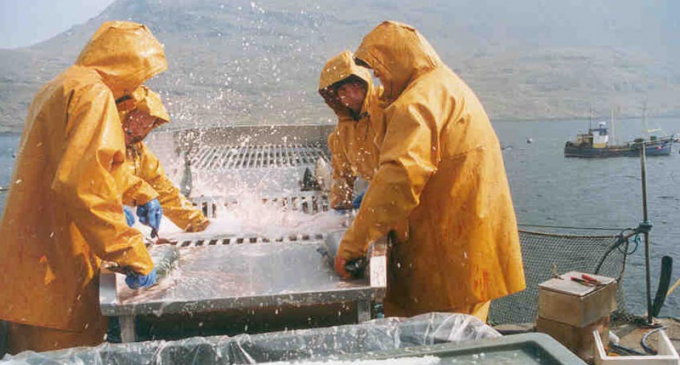Farmed in the EU – Commission Backs Europe’s Fish Farmers

Fish farming is healthy and can help tackle overfishing and protect wild fish stocks. That is the message delivered by European Commissioner for Maritime Affairs and Fisheries, Maria Damanaki, at a specially organised event at the Seafood Expo Global held in Brussels.
At the event, part of the Commission’s ‘Inseparable’ campaign to promote sustainable seafood, Commissioner Damanaki highlighted the specific qualities of European fish farming, or aquaculture: “As the population rises so does our demand for fish. Without fish farming there would simply not be enough fish to eat and the long term sustainability of our wild fish stocks would be at risk. Fresh, local and healthy, fish farmed in the EU meets high consumer protection standards, and tastes delicious.”
As part of the reform to the Common Fisheries Policy, the EU is committed to further supporting the aquaculture sector. A recent set of guidelines present the common priorities and general objectives for Europe’s fish farming sector which include improving access to space and water, maintaining high health and environmental standards, reducing administrative burdens and increasing competitiveness. Financial support to achieve this will be made available through the new European Maritime and Fisheries Fund, whilst research aiding the sustainable development of European aquaculture will also be funded.
Fish farming, also referred to as aquaculture, is the cultivation of freshwater and marine animals and plants. Practised across Europe, it produces many species of fish, shellfish, crustaceans and algae using a range of different farming methods including traditional ones such as ropes, nets, and tanks, or highly sophisticated ones like water recirculation systems.
Around half of the EU’s production is shellfish, with mussels and oysters being the most popular, with other species including marine fish such as salmon, seabream and seabass, and freshwater fish such as trout and carp. Strict EU hygiene and consumer protection rules, which apply equally to wild and farmed fish, ensure that only safe and healthy products reach our tables.
In the EU we import 68% of the seafood we eat and only 10% of our consumption is farmed here. By eating locally farmed fish we rely less on importing from abroad and we have access to extra-fresh products. More than 80,000 people are already directly employed in European aquaculture, and this figure is expected to grow as more and more of our seafood is provided by EU fish farmers.
The Seafood Expo Global, which takes place in Heysel, Brussels which was held between 6-8th May, is the world’s largest seafood trade fair and brings together over 1,600 exhibitors from over 70 countries.


























